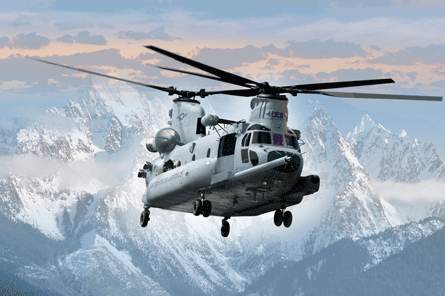The US Air Force reopened bidding on 15 November for the combat search and rescue (CSAR-X) helicopter contract, with a downselect decision reportedly to be delayed until August 2008. The service has budgeted $3.3 billion for CSAR-X over the next six years, with about one-third to be devoted to covering research and development costs.
The first operational unit equipped with the new aircraft is expected to be ready by late 2014, and the final aircraft delivery is scheduled during 2020. The original, $10 billion requirement called for the first of 141 aircraft to achieve initial operational capability in 2012.
The new bidding process marks the USAF's third attempt to select a contractor after initially awarding the deal to Boeing for the HH-47 Chinook in 9 November 2006. The rival teams for the Lockheed Martin/AgustaWestland US101 and Sikorsky HH-92 successfully overturned that decision on the grounds that the USAF analysed life-cycle cost estimates in a different way than had been expected.
|
|---|
Third time lucky? Boeing hopes to win the day - again - with its HH-47 |
The air force asked the contractors to submit life-cycle estimates, but instead used its current Sikorsky HH-60 Pave Hawk CSAR fleet as the baseline to judge all the competitors. Lockheed and Sikorsky argued that this swung the advantage to Boeing, which avoided the life-cycle cost penalty of offering a tandem rotor helicopter.
Both competitors again successfully blocked the USAF from attempting to narrowly reopen the contract, with the companies allowed to tweak only a portion of the life-cycle cost estimate data, but leave the rest of the proposal the same. The service instead accepted the Government Accountability Office's recommendation, which said that a third round of bidding should be opened, with competitors allowed to submit new proposals with the same platforms. Any tweaks to the proposed aircraft will have to again undergo a flying evaluation and a deployability test.
Responses to the USAF's third CSAR-X solicitation are due in early January. Air force officials originally hoped to complete source selection within two months, but this has reportedly been extended to now allow a downselect in August.
The winning bidder will be in a position to redefine the role of combat search and rescue. Beyond retrieving downed pilots behind enemy lines, the USAF now defines the mission as also including personnel recovery, which includes such peace-time work as evacuation of non-combatants.
In the USAF's 2007 "posture statement", the CSAR-X fleet was defined as needed to meet the entire spectrum of warfighting operations, "as well as perform non-combatant evacuation and disaster relief operations".
Boeing claims that the HH-47's high speed and larger cabin volume make it the ideal candidate for the expanded role, although its competitors have countered that the airframe is too unwieldy for the pure combat rescue role.
Source: Flight International
























